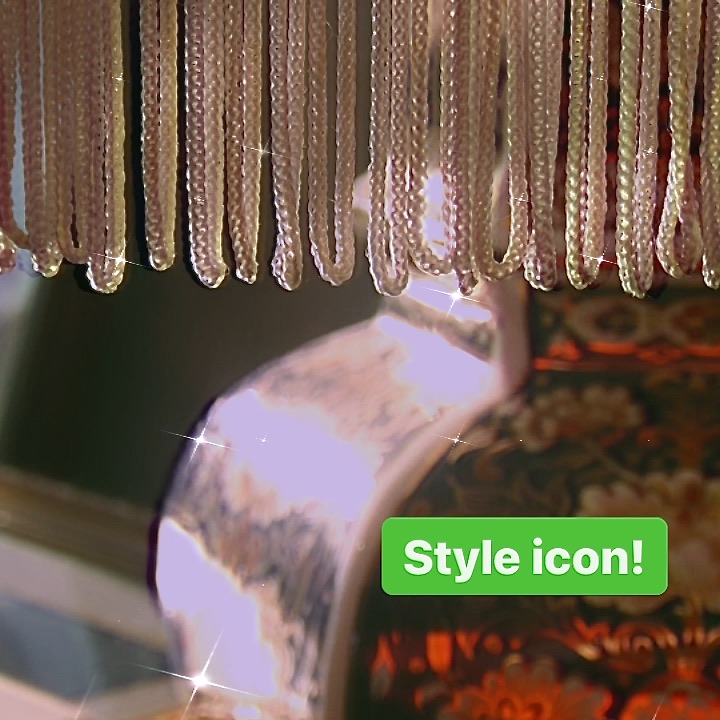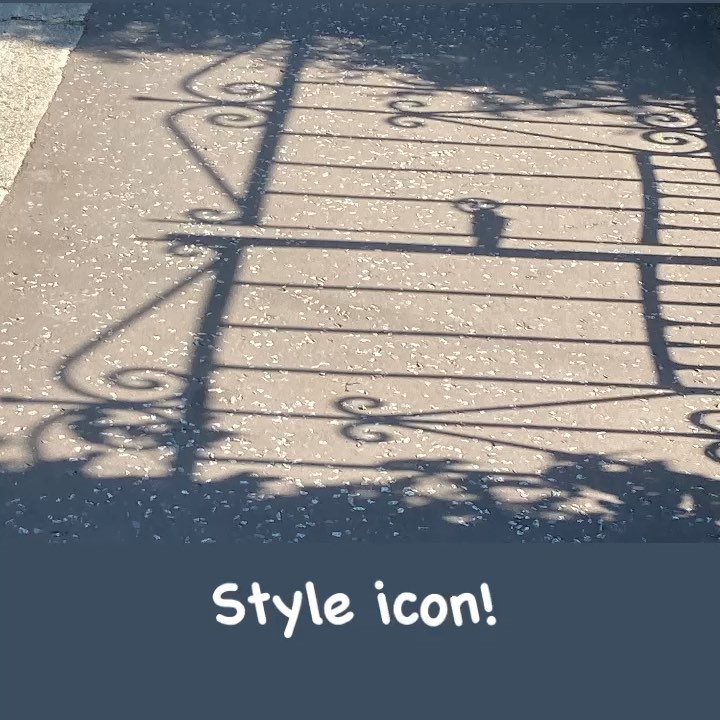(See: Anyone_At_Home on Instagram)
Instagram is direct, it’s fun, it’s creative and, yes – inspiring.
A flicker of image becomes an instant connection. This is modern-day storytelling works.
Insta enables anyone to communicate ideas with the world. And, because of that is a hugely liberating and powerful platform, and a great leveller.
Most of the images and ideas are not going to change to world… but some might.
Every instagram post is a window into someone, somewhere.

On Instagram there is the juxtaposition of the weird and wonderful, the daft and the pointless.
Instagram draws from a mind-boggling range of uploaded images; of experiences, people and places. It is a massive ‘live’ repository of who we are – and how we think – today.
There are people I follow, in whose lives and posts I am genuinely interested so I am up to date.
And then there are the ones the Insta algorithm chooses for me.
Currently, my Insta algorithm sends me videos and images of… campervans, ‘Karens’, Modern Family, The Office and cats.
Even if I scroll past quickly, the algorithm will come right back with more stories to hook me in.
It only takes an instant to be diverted into the Instagram world.
For me it is a world of puppies, holidays, drinks, TV shows, DIY makeovers, celebrity interviews, badly parked cars, car crashes. All things I didn’t know I needed to know.
A distraction can easily become an addiction.
The thrill of “likes”, the joy of expanding ideas and connections… all this, all that.
I’m intrigued how this has become a career for ‘influencers’ with paid subscribers and promotional ads. People who are happy to monetise their children, their homes and pet. It is often hard to distinguish what is real, and what is not.
I think I can tell – but not always…


On Instagram, anyone who can take photo can tell a story.
And all it takes it that one image to somehow (and instantly) hook you in.
That is why Instagram is such a hugely accessible, successful – and mighty – tool of persuasion.
In the creative sector, the photo essay is – and always has been – a legitimate form of discussion and thought.
Creative people prefer to communicate with visual ideas. Visual literacy is knowing how to use images well; with mastery and manipulation.
By contrast, academia tends to favour the rigour of the densely written word… graphs.. tables..pie charts. It is much less comfortable with visual data; because it is does not fit with ‘science’.
I couldn’t ever imagine this website without using images.


Each of these stories is of an experience lived in place and space.
The interview is the story in the respondent’s own words, the images provide the all-important spatial locus. The data – what that space looks like, how it is experienced and how it came to be – resonates somewhere between the images and words.
From the interviews I can extract a random image to use on Instagram
On its own the image says something. A simple idea/thought/concept put out there, for the world to see – or not.
It is a creative means of expression that is both data and content.
Everyday life at home is not mundane, it is visually and emotionally rich.

‘Home’ is a complex component of experiences.
Everything in it is there for a different reason, perhaps chosen at different stages of our lives.
Every day we get older, one moment passes into another. Days become months become years.
Each interview on ‘Anyone At Home’ is a snapshot, a glimpse of someone’s home – and life – as a moment in time.
A time that is now passed.
‘Our world’, behind the closed doors of our home, is a place that few people ever get to see.



We keep old photos to remind us of events, and people and places, but rarely take pictures to show how our home changes; naturally, seasonally and over the course of the day. These are lived experiences that only someone who lives there would know.
In my home today ( September) it is sunny. I can see spider’s webs have appeared overnight, both inside and outside. There are courgettes and beans in the kitchen picked from my garden. I have clean laundry piled up from a weekend away and a new blue throw to protect the armchair from the cat’s hairs. There are dishes drying by the sink and old flowers in a vase that may need to be binned.
In three months time the space physically may look much the same, but it will be subtly different
I know that the light will extend more deeply into the rooms and the curtains will be pulled earlier, the central heating ( may/ may not) go on. The doors and windows are likely to be closed all day, every day.
As time goes on the indoor plants will get bigger – or die. Items will get broken and replaced. And of course in December, there will be a Christmas tree in the corner, which means the furniture in the living room will be temporarily rearranged.
Once Christmas is over, things will return to normal – again. Again.



With Instagram, more and more people seem to live for the perfect image.
Instagrammable interiors are spaces designed as backdrops, places created to look ‘different’ – meaning quirky.
And nowhere is this more apparent than in hospitality.
Interiors have to be talking points – and ‘Unique’. They have to go beyond the “wow” factor into the hyper-real. What is reality?
Spaces have to attract customers just so they can have their photograph taken. Just so they capture ‘a moment’ of being there that looks good on Instagram.
And because of Instagram, so the interior is instantly recognisable, the colour and lighting will have to be super-theatrical/ cinematic.
Interiors are no longer spaces for being (in the moment).
This is where interior design and marketing overlap in the physical world.
An interior space has to work that much harder to market itself visually just so it will be picked up by Instagrammers – and then shared.
To stand out from the other places an interior cannot be subtle, because it now needs to draw people via their phones.
It needs to be place where Instagrammers will want to go. The place looks good, they look good – everybody’s happy!
Just stand right ‘here’ to get the perfect shot!


Anyone At Home is the opposite of all that.
It aims to dig deeper in the why’s and wherefore’s of interior spaces and experiences.
Some of the photos were taken by me, others were taken by the respondents.
Interviewees may well have tidied up so their home looks its best. That is their choice. They show their home in the way they want it to be seen.
On Instagram each image as a post/story will be enhanced, re-coloured, cropped and in some cases animated with words and music added.
I use Instagram to reach out to a wider audience with a message that is bold and designed to catch (someone’s) eye to draw them to the deeper, wider thoughts of Anyone At Home.
When an Instagram post appears fleetingly on someone’s Insta feed it may catch their eye and enter their consciousness where it may connect with their own lived experience of home.
It may be just a thought, an image, a word… a life.
But it is an image that connects us to a real place, a real space and a real home.
Home – not just as a visual backdrop but as a lived experience of space.













